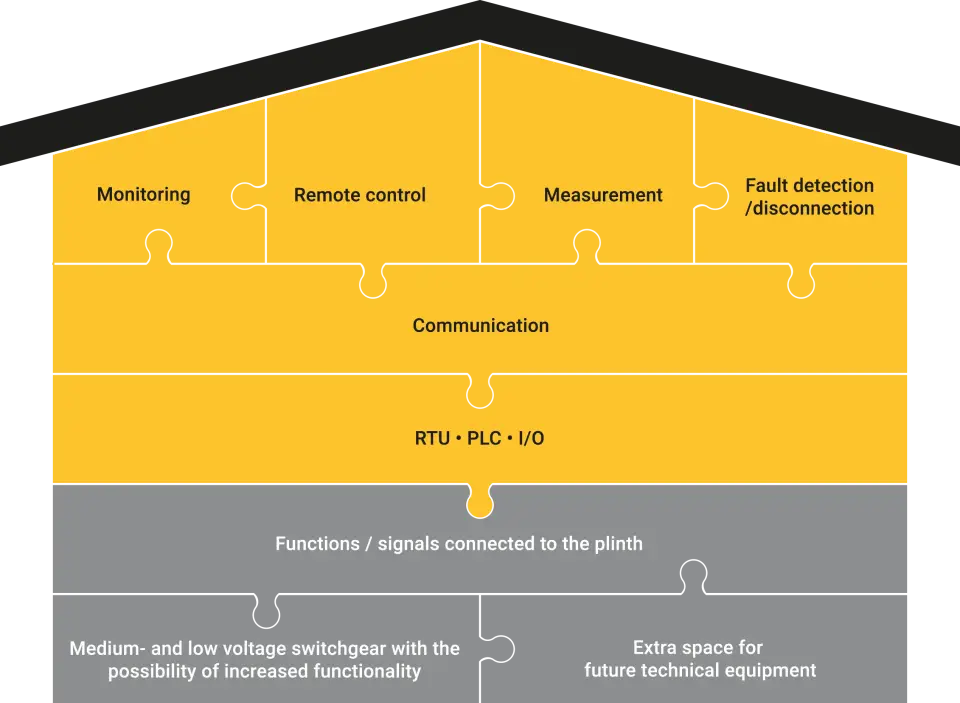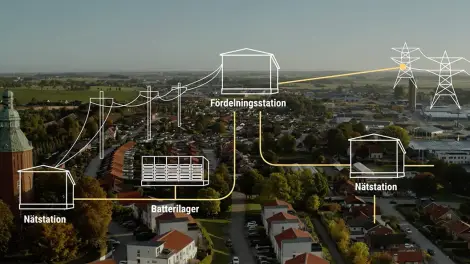Compact secondary substation (CSS) automation solutions
We offer complete solutions from leading suppliers of compact secondary substation (CSS) automation. As such, they are equipped with a central RTU/PLC unit and the number of I/O units, indicators, remote communication equipment and power supply/UPS required to meet your exact needs.

Everything is programmed and ready for use. This means a compact secondary substation (CSS) automation solution can be implemented at a low cost to assure communications between the compact secondary substation (CSS) and a system such as SCADA.
Grid automation solutions range from indoor mounting plates to weatherproof enclosures. When you order an assembled solution, it is delivered fully assembled and tested according to the customer’s wishes. Some solutions can be verified all the way from our factory to the customer’s SCADA if desired.
We cooperate with a number of suppliers such as Netcontrol, ABB, Schneider, Smart Grid Networks, Techinova, etc.
Systems and monitoring
We offer a wide range of RTU devices that monitor, control and communicate with the compact secondary substation (CSS), including position indication of primary devices and current, voltage and energy measurement on the low-voltage side. It is also possible to monitor and control other parts such as the compact secondary substation (CSS)’s enclosure protection, alarms and ventilation, all adapted to individual needs.
Uninterruptible power supply (UPS) including battery management
A compact secondary substation (CSS) automation cabinet must remain in operation long enough to perform a number of steps in the event of power failure. The extra power required to switch load break switches or circuit breakers requires a particularly high-performing on-site battery with a wide temperature range.
Depending on the make, the equipment is powered via 12/24/48 VDC
- Normally powered power units 115 and 230 VAC
- The battery for uninterruptible power supply is adapted to requirements for maximum current, charging and standby time. Typical values are 6–8 hours charging time and 12–48 hours standby time in the event of a power failure.
- UPS and battery monitoring for preventive maintenance
Fault detection and fault disconnection
We use different types of earth fault indicators and short-circuit detectors which communicate with the RTU, providing opportunities to obtain a great deal of information. With the help of indicators, we can get data such as current, voltage, power (S, P, Q), power factor, frequency, earth fault and short circuit with direction on the medium voltage side.
In order to selectively disconnect the fault, a solution with a protection relay together with a circuit breaker in the substation can be selected.
Measurement
Through internal communication between the RTU and energy meter, parameters are retrieved on the low-voltage side of the compact secondary substation (CSS).
- Voltage and current measurement
- Measurement of Power, S, P, Q cosφ
- Measurement of electrical quality: THD, harmonics, etc.
- Measurement of overvoltage and undervoltage.
Communication
Holtab offers a number of different solutions for communication via its suppliers. Examples include communication over the public networks Net1 and the mobile network (2G, 3G, 4G), but we can also offer communication with special security solutions for isolated communication networks that meet the high requirements of modern applications, communication carried via copper, optical fibre or wirelessly. Communication to SCADA takes place either through standard protocol or through encrypted transmission.




